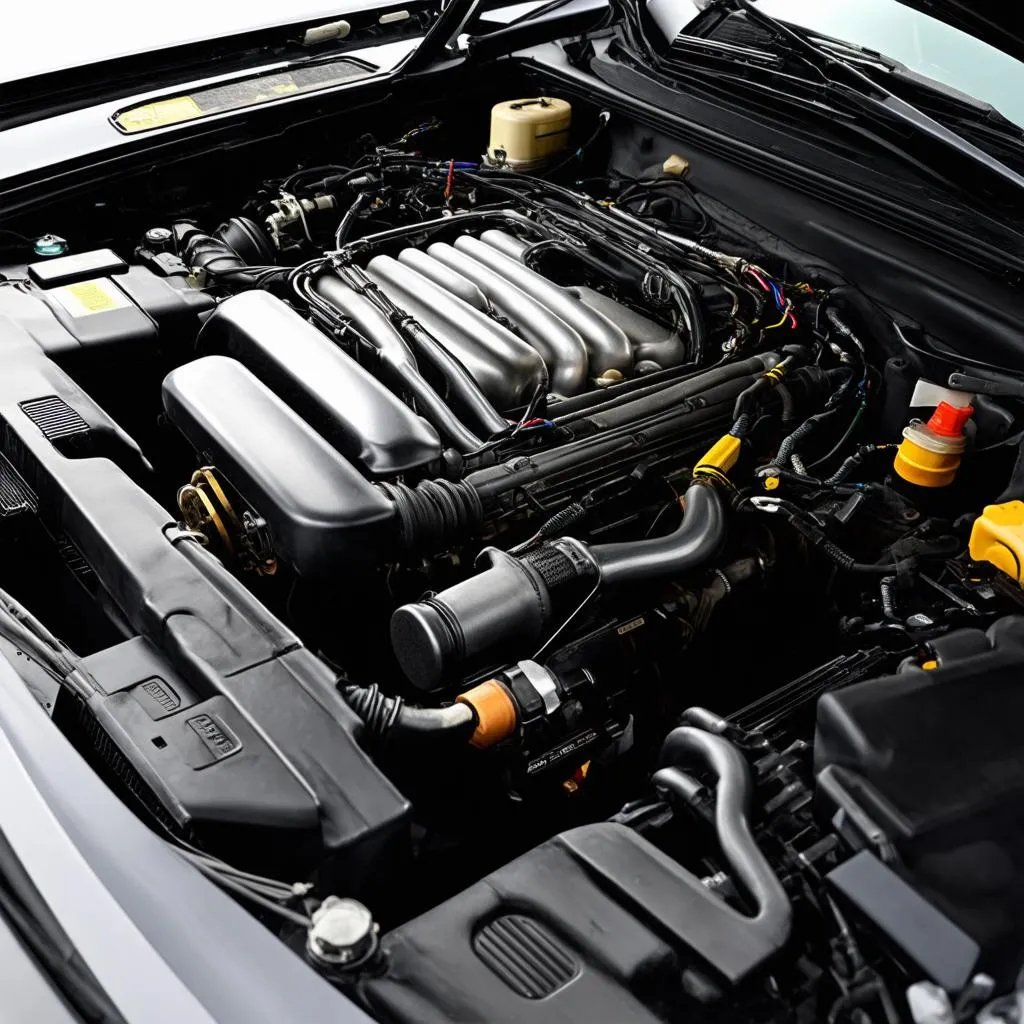Imagine this: you’re cruising down the Pacific Coast Highway, California sunshine warming your face, when suddenly, your engine sputters and dies. Not the scenic stop you had in mind, right? Car issues – they’re the uninvited guests that can turn a smooth ride into a roadside nightmare. But don’t worry, understanding the common culprits and knowing how to troubleshoot them can empower you to tackle those automotive hiccups head-on.
Decoding “Car Issues”: A Multifaceted Problem
From a seasoned mechanic’s perspective, “car issues” encompass a broad spectrum of malfunctions, ranging from minor annoyances like a flickering headlight to major headaches like transmission failures. A loose gas cap might trigger a “check engine” light in your Toyota Camry while a faulty spark plug could leave your Ford F-150 refusing to start on a chilly Chicago morning.
Technically speaking, car issues often stem from the intricate interplay of mechanical, electrical, and even software components. A worn-out timing belt in a Honda Civic or a software glitch in a Mercedes-Benz S-Class can bring your journey to an abrupt halt.
Economically, car issues translate to unwanted expenses. Unexpected repairs, especially for complex systems like the ABS in a BMW X5 or the infotainment system in an Audi A4, can put a serious dent in your budget.
Troubleshooting 101: Identifying and Addressing Common Car Issues
1. Engine Problems:
- Symptoms: Rough idling, stalling, difficulty starting, decreased fuel efficiency, unusual noises.
- Possible Causes: Faulty spark plugs, clogged fuel injectors, worn-out ignition coils, a malfunctioning oxygen sensor, or even more serious issues like a failing catalytic converter.
- Troubleshooting: Checking the engine oil level, inspecting air filters, and scanning for diagnostic trouble codes (DTCs) using an OBD2 scanner like the Autel MaxiCheck Pro 808 (link: https://diagxcar.com/autel-maxicheck-pro-808/) are often the first steps in diagnosing engine problems.
2. Electrical System Malfunctions:
- Symptoms: Dimming headlights, flickering interior lights, malfunctioning power windows, a dead battery, issues with the radio or infotainment system.
- Possible Causes: A failing alternator, a corroded battery terminal, a blown fuse, or wiring issues.
- Troubleshooting: A multimeter can be handy for checking battery voltage and continuity in electrical circuits.
3. Brake System Issues:
- Symptoms: Spongy or unresponsive brake pedal, squealing or grinding noises when braking, the vehicle pulling to one side when braking, or a pulsating brake pedal.
- Possible Causes: Worn-out brake pads or rotors, brake fluid leaks, a faulty ABS module, or air in the brake lines.
- Troubleshooting: Regular brake inspections, including checking brake fluid levels and inspecting brake pads, are crucial for preventing unexpected issues.
4. Transmission Troubles:
- Symptoms: Slipping gears, rough shifting, delayed engagement, or a burning smell.
- Possible Causes: Low transmission fluid, worn-out clutch components (in manual transmissions), or internal mechanical failures within the transmission.
- Troubleshooting: Transmission problems often require specialized knowledge and tools. If you suspect a transmission issue, it’s best to seek professional help.
5. Suspension and Steering Problems:
- Symptoms: A bumpy ride, excessive bouncing, pulling to one side, uneven tire wear, noises when turning the steering wheel.
- Possible Causes: Worn-out shocks or struts, damaged control arms, a misaligned steering wheel, or issues with the power steering system.
- Troubleshooting: Inspecting the suspension components for signs of wear and tear and checking the power steering fluid level are good starting points.
 Car Engine
Car Engine
Real-World Car Issues: Tales from the Road
Let’s put faces to these issues, shall we?
John, a mechanic at a busy repair shop in Houston, Texas, once had a frantic customer tow in their Chevrolet Silverado, convinced the engine was gone. Turns out, it was a loose gas cap that had triggered a cascade of confusing error codes. A simple fix, but a valuable lesson: even seemingly minor oversights can have major impacts.
Then there’s Sarah, driving her Volkswagen Jetta through a snowstorm in Denver, Colorado, when her battery decided to call it quits. A dead battery in freezing temperatures is more than just an inconvenience; it’s a safety hazard. Thankfully, a Good Samaritan with jumper cables came to her rescue.
These stories emphasize the importance of proactive car maintenance and understanding the language your car speaks through its various symptoms.
Seeking Expert Help: When DIY isn’t the Answer
While basic troubleshooting can sometimes resolve minor issues, it’s crucial to recognize your limits. When faced with complex problems or when you lack the necessary tools or expertise, seeking professional help is always the safest and most prudent course of action.
 Car Diagnostic Tools
Car Diagnostic Tools
Got More Questions About Your Car?
- What does the “check engine” light really mean?
- How often should I change my oil?
- What are the signs of a failing alternator?
- How can I improve my car’s fuel efficiency?
- What are the essential car maintenance tasks I can do myself?
For a deeper dive into these topics and more, check out our other informative articles on Diag XCar:
- Understanding Autel Scanner Scope
- Autel Video Help & Tutorials
- Review of the Autel AL519 Autolink Scan Tool
Need Assistance? We’re Just a Message Away!
Dealing with car issues can be stressful, but remember, you don’t have to navigate the intricate world of automotive repair alone. If you’re wrestling with a particularly stubborn car problem or need guidance on choosing the right diagnostic tools, our team of automotive experts is ready to assist. Don’t hesitate to reach out to us via WhatsApp at +84767531508 – we’re here to help you get back on the road smoothly and confidently.
Drive Smart, Drive Safe
Understanding and addressing car issues promptly is not just about keeping your vehicle in top shape, it’s about prioritizing your safety and ensuring a smooth and enjoyable driving experience. Remember, a well-maintained car is a happy car, and a happy car means a happy driver!